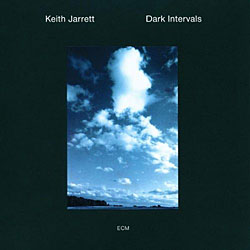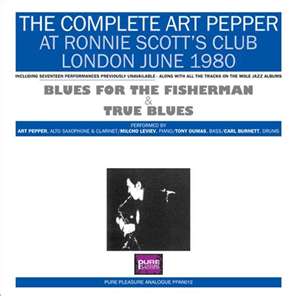Luxman DU-50 universal player
I discussed Luxman's DU-50 near-universal player ($4990, it plays SACDs, DVD-As, DVD-Vs, and CDs, but not Blu-ray discs) in no fewer than five columns in 2009 (February, April, June, August, October).
I discussed Luxman's DU-50 near-universal player ($4990, it plays SACDs, DVD-As, DVD-Vs, and CDs, but not Blu-ray discs) in no fewer than five columns in 2009 (February, April, June, August, October).
In my youth, when I wasn't driving my beloved car, I was washing it. Polishing it. Waxing its engine compartment. Spraying Armor All on its hoses and bushings. Cleaning its interior vents with cotton swabs, and its shifter boot with Lexol. I did all of my own maintenance and some of my own repairsthose of the latter that didn't require specialized tools, at leastand I kept the car covered with a car cover I bought from a mail-order house, along with lots of other crazy junk.
 KEITH JARRETT: Dark Intervals
KEITH JARRETT: Dark IntervalsAfter a five-year hiatus in which he explored jazz standards, classical music, the clavichord, and the unclassifiable Spirits, Keith Jarrett has returned, however briefly, to the form that gained him his widest reputation: solo piano improvisations. But with a differenceonly a single LP this time (instead of two, three, or ten), that LP composed of eight short sections, each with a title. This is a far cry from unbroken piano improvs spanning three LP sides, titled only with the name and date of the venue.
The tides of the digital audio industry are turning as hi-rez audio downloads are pushed further into the mainstream. On March 2, 2011, HDTracks welcome ABCKO's Remastered Series of the Rolling Stones to their catalog, available at 176kHz/24bit and 88kHz/24bit.
 The Complete Art Pepper at Ronnie Scott's Club, London, June 1980, a 7-LP boxed set released by Pure Pleasure Records, is a total surprise and a sheer delight.
The Complete Art Pepper at Ronnie Scott's Club, London, June 1980, a 7-LP boxed set released by Pure Pleasure Records, is a total surprise and a sheer delight.
Art Pepper, who died in 1982 at the age of 56, was not only one of the great alto saxophonists of his era but a self-transformer to boot. In the early 1950s, he routinely ranked No. 2 in Downbeat polls (beat only by Charlie Parker), then vanished in the '60s (locked up in various prisons on drug charges), only to emerge in the mid-'70s with a totally different sound.
It seemed a simple and obvious question, but I couldn't get an answer out of Ron Sutherland. Why did his new 20/20 phono preamp use an AC power supply instead of batteries? I asked directly, I asked repeatedly, I tried framing the question in different ways, all to no avail. Did the AC supply make it sound better? Was it less expensive to build? Were potential customers turned off by having to replace batteries once every year or two?